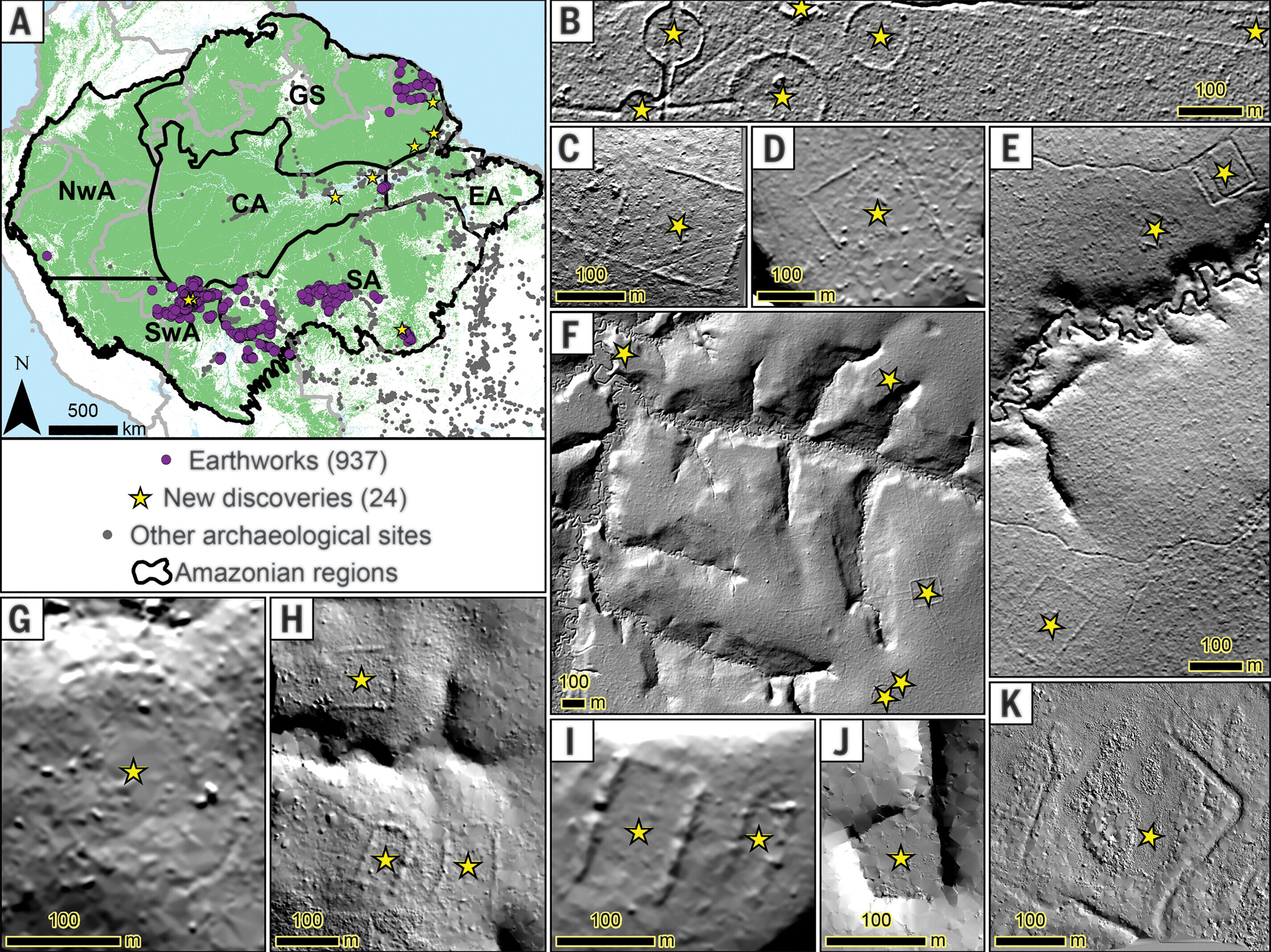Researchers have discovered two dozen ancient constructions hidden beneath the canopy in the Amazon rainforest basin.
The constructions are earthworks built in the pre-Columbian era—meaning prior to the period of European colonization. They represent the remnants of a variety of sites and structures built by ancient Indigenous peoples.
The previously unknown earthworks include the remains of an ancient town, fortified villages; defensive and ceremonial structures; as well as rectangular and circular features known as geoglyphs; among other constructions, according to a study published in the journal Science.
Indigenous societies are known to have lived in the Amazon region for at least 12,000 years, creating earthwork structures and domesticated landscapes that have had long-lasting effects on the forest.
However, the scale of these societies’ influence on the forest remains poorly understood. Primarily, this is due to the fact that finding evidence of them is very challenging given the density of the forest canopy and the remoteness of many archaeological sites.
In the latest study, however, a large international team of researchers used LiDAR (light detection and ranging) technology to survey more than 2,000 square miles of the Amazon basin, which enabled them to identify 24 previously unknown earthworks.
LiDAR essentially allows scientists to see through the forest canopy and create detailed 3D models of the surface elements, including any unknown structures that lie below.
“Our study suggests that the Amazon rainforest may not be as pristine as many believe, as when we seek a better understanding of the extent of pre-Columbian human occupation throughout it, we are surprised by a significant number of sites still unknown to the science community,” Vinicius Peripato, a doctoral student in Remote Sensing at Brazilian National Institute for Space Research (INPE) and co-lead author of the study, said in a press release.
“From the 3D models of the surface, it is possible to digitally remove all vegetation and initiate a precise and detailed investigation of the terrain beneath the forest.”
The scientists then modeled the occurrence of other ancient earthworks across the Amazon, predicting that anywhere between roughly 10,000 and 24,000 are waiting to be discovered in the region.
The latest findings shed new light on the influence of pre-Columbian societies in the Amazon region.
“Some time ago, ecologists viewed the Amazon as the vast untouched forest, but now, combining other types of pre-Columbian remains, we can see how many areas that currently sustain dense forest have already been subjected to extensive engineering works and the cultivation and domestication of plants by pre-Columbian societies,” Carolina Levis from the Federal University of Santa Catarina in Brazil said in the press release.
“These people mastered sophisticated techniques for land and plant management, which in some cases, are still present in the knowledge and practices of present-day communities that can inspire new ways to coexist with the forest without the need for its destruction.”
The LiDAR survey data collected for the study only covered 0.08 percent of the total area of Amazonia, but the researchers wanted to better understand where and how many undocumented pre-Columbian sites there might be in the region.
In order to do this, the scientists combined the data from their relatively small survey with knowledge from previously identified sites to create a predictive model that could estimate the occurrence of pre-Columbian structures.
This model indicated that between 10,272 and 23,648 large-scale pre-Columbian structures remain to be discovered, particularly in southwestern Amazonia.
Furthermore, the researchers found an association between the predicted locations of earthworks and the abundance of dozens of domesticated tree species. This suggests that active pre-Columbian Indigenous forest management practices have long shaped the ecology of modern forests across Amazonia.
“Amazonian forests clearly merit protection not only for their ecological and environmental value but also for their high archaeological, social, and biocultural value, which can teach modern society how to sustainably manage its natural resources,” the authors wrote in the study.

